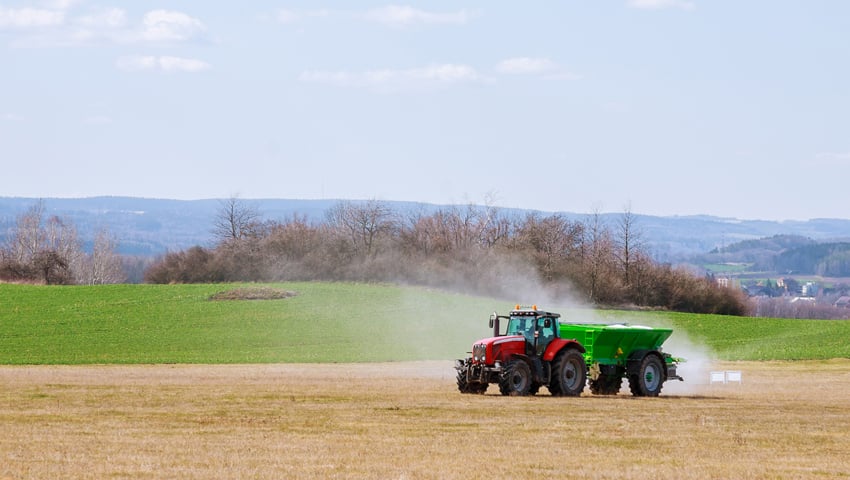THE AVERAGE critical load for nitrogen deposition in the Netherlands is lower than previously assumed, according to new research by Wageningen Environmental Research, the Netherlands Environmental Assessment Agency and Research Centre B-WARE.
The value that indicates how much nitrogen nature can tolerate without decline has decreased by an average of 1.3 kilograms per hectare per year. This means that nitrogen emissions need to be reduced even further to protect nature.
The revision of the critical loads (CL), commissioned by the Dutch Ministry of Agriculture Nature and Food (LNV), resulted in an average reduction from 19.0 kilograms of nitrogen deposition per hectare per year to 17.7 kilograms over all nitrogen sensitive nature types. While the critical load remains unchanged for some nature types it has significantly decreased for others.
The effects of nitrogen deposition vary by nature type. In the Netherlands, there are 84 different nature types, of which 67 are sensitive to nitrogen deposition. Each of these nature types has a critical load, as do 14 habitats of species protected under European law. For 64 nature types, the critical load remains unchanged, while it has been lowered for 32 and raised for 2.
A decrease in the critical load means that nature is already experiencing damage at lower levels of nitrogen than previously thought, potentially causing the disappearance of plant species that are characteristic of their environments, such as orchid species in wet grasslands.
Critical load becoming increasingly accurate
Last year, it became clear that some deposition values should be adjusted downward. New international research led to a partial lower critical loads at the European level. This research, commissioned by the United Nations Economic Commission for Europe (UNECE), is based on long-term field experiments. These experiments provide a minimum and maximum value for nitrogen deposition, known as the empirical range. This range provides deposition values for all of Europe, accounting for differences in conditions such as soil and climate. These values also serve as the basis for the Dutch critical load. The international research with new empirical values led to the update of the CLs for the Netherlands, yielding the same result: some nature is more sensitive to nitrogen than previously thought.
Wieger Wamelink, ecologist at Wageningen University & Research, explains why the critical load has been lowered, “Nitrogen that precipitates in nature remains in the soil and plants for years and accumulates. At the same time, the soil continues to become more acidic. Field experiments, such as the UNECE research, increasingly show the effect this has on nature. The longer the measurements continue, the clearer it becomes what the negative consequences are of excessive nitrogen on nature. As a result, the critical load is becoming increasingly accurate and generally lower.”
Nitrogen goals further out of reach
In addition to empirical values from field experiments, models have also been used to calculate the critical loads for Dutch nature. The same model outcomes as in the last update eleven years ago have been used for this purpose. “But scientific developments for new model calculations are progressing rapidly,” says Wamelink. “An alternative method is under development. This method still has uncertainties in some of the results, which we are refining in another study. This method could yield even lower critical loads.”
For almost all nature types where something has changed, the values for nitrogen deposition have decreased. According to Wamelink, this means that achieving the nitrogen goals will be more challenging: “Deposition needs to be reduced more than previously assumed to meet the goals. However, the current exceedance in many places is still so high that we first need to see if we can reduce current deposition by half. That’s already a significant task, but if we succeed, it will lead to a substantial improvement for nature. After that, we can assess what is needed to reach the critical value for the most sensitive nature types.”
How were the CLs calculated?
- For each nature type, it was examined whether empirical values and model calculations were available. Empirical values have a certain range (e.g., 10-15 kilograms per hectare per year), while the model yields unique numbers.
- If both an empirical value and a model outcome are available, the Dutch CL is based on both. There are three possibilities:
- The modelled CL falls within the empirical range, then the Dutch CL is equal to the modelled value. For example, for Inland dunes, the range is 5-15 kg/ha/yr., and the modelling is 10.4 kg/ha/yr. The Dutch CL is then rounded to 10 kg/ha/yr.
- The modelled CL is lower than the range of the empirical CL. The Dutch CL then becomes the lower limit of the empirical range. For example, for Moist, Calcium-poor variant of Species-rich Nardus grassland, the range is 10-20 kg/ha/yr., and the modelled value is 9.6 kg/ha/yr., the Dutch CL becomes 10 kg/ha/yr.
- The modelled value is higher than the range of the empirical range. The Dutch CL then becomes the upper limit of the empirical range. For example, for Calcium rich Semi‐natural dry grasslands, the range is 10-20 kg/ha/yr., and the model outcome is 21.1 kg/ha/yr. The Dutch CL becomes 20 kg/ha/yr.
- If no empirical range is available, the CL is equal to the model outcome (sometimes adjusted based on expert judgment).
- If no model outcome is available, the CL is equal to the midpoint of the empirical range (sometimes adjusted based on expert judgment).
- If no empirical range, model outcome, and expert judgment are available, no CL is given, which means that the type is considered (temporarily) insensitive to nitrogen deposition.
